Now & New
- Experience
One if by Land, Three if by Sea, Part One: Yassa Festival Weekend in Mihara
The Yassa Festival in Mihara is one that I had been wanting to attend for years, but thanks to a pandemic and a bunch of other factors, I wouldn’t get my chance until this year’s summer break. Always taking place smack dab in the middle of Obon (Japanese summer break) when school and work are out, the Yassa Festival is one of the most anticipated events not only for Mihara locals, but for residents all over Hiroshima Prefecture that drop by to visit Mihara at its liveliest. However, I for one believe that simply taking a day trip to see a single day of a festival is too much of a waste of time, especially considering that I have so much time on my hands during summer break. Ergo, I decided to book a ryokan in Mihara for three nights and see the festival over the weekend and take miscellaneous day trips from Mihara Port on the remaining days. It would be a brief summer vacation full of dazzling dances, fabulous food, serene sailing, and treasured treks rife enough with detail to warrant a four-part series.
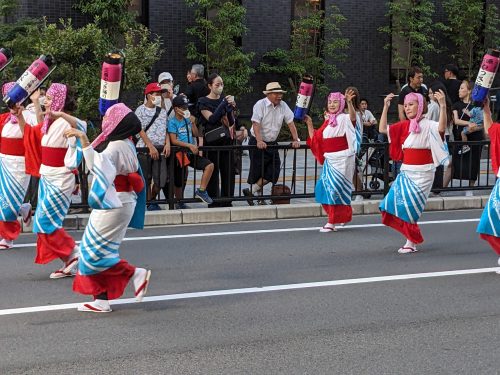
The Yassa Festival in 2023 took place from Friday, the 11th of August (also Mountain Day), to Sunday, the 13th. On Friday and Saturday, there would be stage performances during the day in front of Mihara Station and the Yassa dance at night throughout the streets in the vicinity of the station square. Sunday would see a fireworks spectacular at the banks of the Numata River happen at night to close out the Yassa Festival on a high note. As I wanted to balance out my time taking part in the festival and going on maritime excursions afterwards, I chose to check out the festival on Saturday and Sunday only, which in retrospect was more than enough time. Lots of events would be happening concurrently in Mihara on account of the Yassa Festival, and my diet for this three-night, four-day trip would consist largely of festival fare and local delicacies, including the coveted Miharayaki.
Afternoon Anticipation
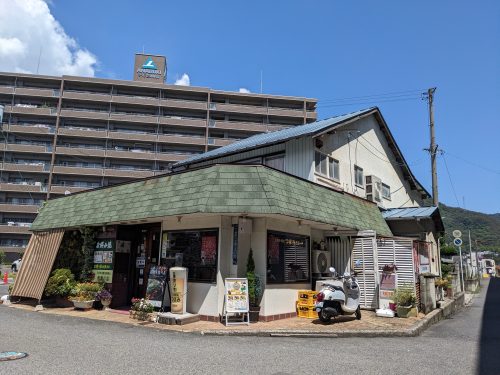
Although Mihara has a Shinkansen station, it wasn’t an economical option as I was in no hurry to get to a festival that begins at dusk, so I leisurely made my way to Hiroshima Station and chugged along the Sanyo Green Line to my destination, just in time for lunch. When I arrived at Mihara Station, rather than take the south exit to the Yassa Festival site like everyone else, I went out the north exit and made a pit stop at Tsubomi, a green-roofed diner that specializes in Miharayaki. One thing to bear in mind is that unlike Hiroshima-style okonomiyaki, where having noodles inside is the rule, with Miharayaki, it’s the exception, and customers who wish to add noodles must specify that they want a “modan’yaki,” as if they were in Kansai.
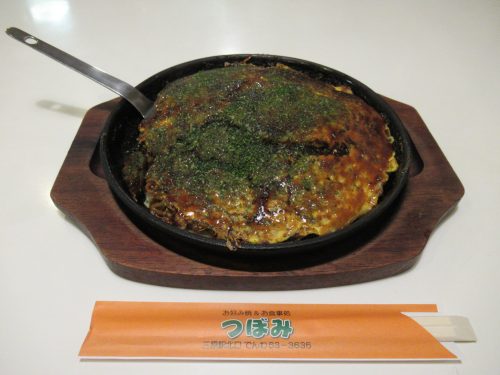
For additional local authenticity, I got one with chicken offal topping, which I must admit I’m still not used to, but was excited to try that day. The chef was certainly generous on the internal organs, since with every cut I made with my spatula, there were chicken livers and hearts galore to be found. Organ meats are an acquired taste, but I mean that as a compliment, and the different texture kept me alert as opposed to plain old pork belly, which might have caused me to stop trying to taste the food.
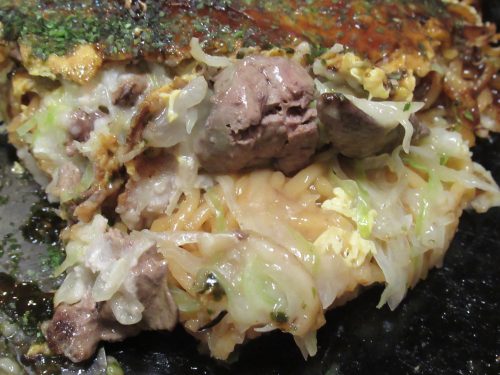
The restaurant interior was cozy too, and while there was no free Wi-Fi, there were electrical outlets available, which gave me an opportunity to charge my smartphone. The outlets were located high up on the wall, though, so after plugging in my device, my smartphone hung down and I had to place it on top of my backpack to keep it from falling and becoming unplugged. Anyhow, I had to justify staying an extra hour to fully charge my battery, so I ordered a melon cream soda for dessert to pass the time. It came in this charming glass with a special handle for handling the drink without getting one’s fingerprints on the ball of the glass.
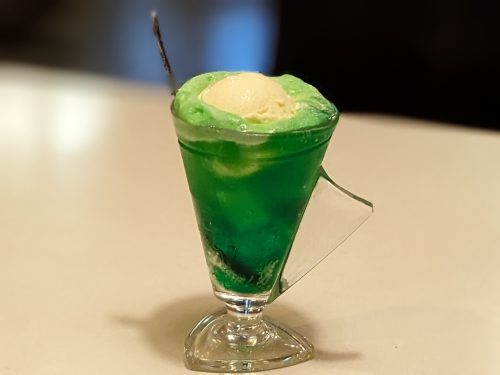
When my smartphone was fully charged and Tsubomi was about to conclude its lunch hours, I paid, left, and took a stroll around the Mihara Castle Ruins, conveniently located across from the restaurant. At this time of day, a hat and sunscreen were a must, and as I circled the moat, I found myself having to adjust the direction of my cap to protect myself from serious sunburns. Though the castle keep has long since gone, the stone foundation remains largely unscathed, and the crystalline waters of the moat serve as a home for local ducks, carp, and turtles.
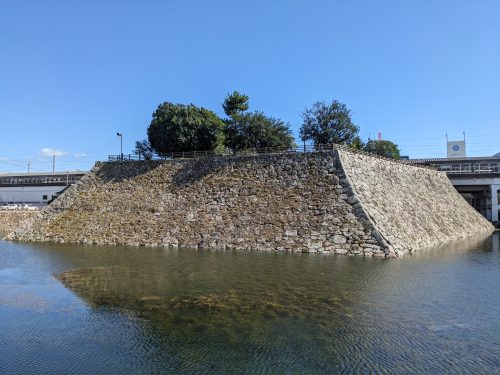
After my stroll, I wandered back to Mihara Station and walked through the south exit, where I was greeted with several beverage stands beside a stage area with a seating area, all covered by tents. While dillydallying inside Tsubomi, I ended up missing most of the shows on this stage, but I at least got to catch the Gion dance, which may not have been the most engrossing performance, but at least put me in a relaxing mood. The MC seemed to share my opinion that this trance of a dance helps one empty one’s mind, and the constant rhythm of the music and chanting makes us feel like we could watch it go on forever.
The Yassa Dance
After the Gion dance ended, I walked to my ryokan to check in, put down my stuff, and rest my weary body until evening, when the Yassa dance was slated to start. When I returned to the festival site close to dusk, I found all the dance troupes on standby in the streets, each wearing a distinct uniform to represent a certain organization. Finally, the clock struck 6:00 p.m., and the Yassa dance instantaneously went into motion, with all groups starting from their respective positions. There were some dancers and musicians at the stage area playing the background music on repeat, and the performers in the street held props like lanterns and fans while dancing; one even dragged a model of a castle keep!
The Yassa dance itself is fairly simple in its motions: when stepping forward with the left foot, bounce with the toes of the right foot on the second step, and vice versa when stepping forward with the right foot. Dancers paraded through the streets stepping like so, peppily waving their arms left and right the whole time. Above all else, the performers must not forget to smile, as it is that inviting expression that entices the spectators to enjoy the Yassa dance alongside them.
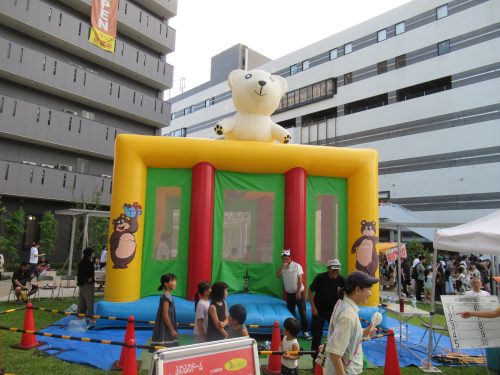
Obviously, the streets were closed to vehicle traffic when the Yassa dance was going on, but as a result, the dancers took on the role of the cars by interrupting street crossings, which meant pedestrians had to wait a while before being able to access other parts of the festival. On the other side of the main street in front of Mihara Station were a majority of the food stands, toy and game stands, and a jumping balloon for the kids. If not for the height maximum, I might have pondered trying the jumping balloon myself, but at my age, I need to take a seat and let the kiddos have their fun. Big kids and grown-ups can instead play other games, like drawing lots for prizes, scooping bouncy balls out of water, or shooting targets. Those in a festive mood can buy a character mask to wear while walking down the street; those masks seem to be popular with all ages no matter what festival I visit.
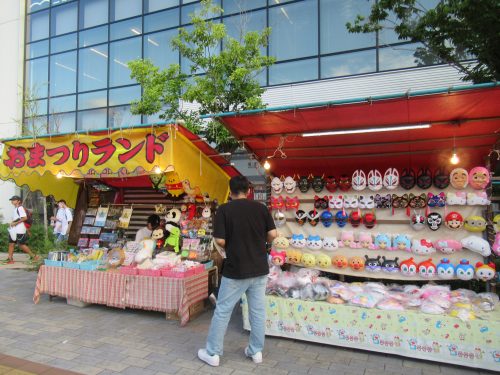
Personally, I feel like the most entertaining activity during the Yassa festival was simply watching the dancers in the street pass us by as we enjoyed ourselves on the sidewalk. As we spectators bought food and drink to partake in while enjoying the show, the performers smiled, waved, and even approached us, as if they were our friendly neighbors who recognized us by chance. In addition to being pleased by the entertainment, I was honestly surprised how every single dancer had the energy to keep up this cheerful attitude and dance to the same song for hours without resting.
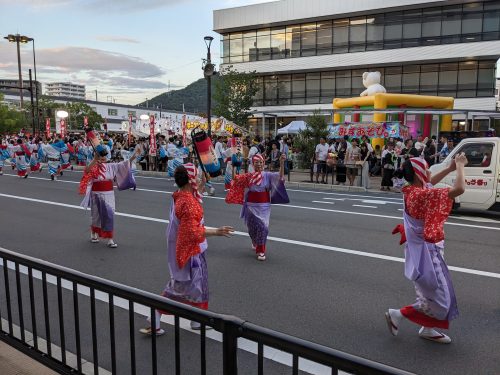
Yassa Yummies
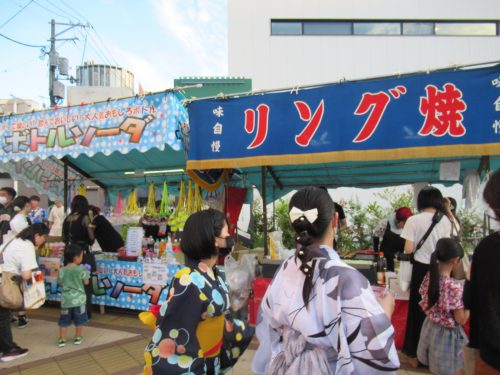
As per tradition, I also scoured the Yassa Festival grounds looking for vendors selling food that I have yet to see at other festivals, and that day, I found yet another new snack: ring-yaki. I first found out about ring-yaki when watching Tamayura (I know, I cannot stop bringing up that show), but since seeing ring-yaki in the anime, I had been curious as to the taste. As its name suggests, ring-yaki are cooked inside metal rings on a metal griddle; a batter containing cabbage and other ingredients is poured into each ring, then each ring is topped with pork and an egg. The resulting product is then basted with a savory brown sauce and packaged for the customer to eat on the go. Customers can save money buying multiple at a time, but as it was my first ring-yaki, I just bought one, then found a bench to sit on before digging in.
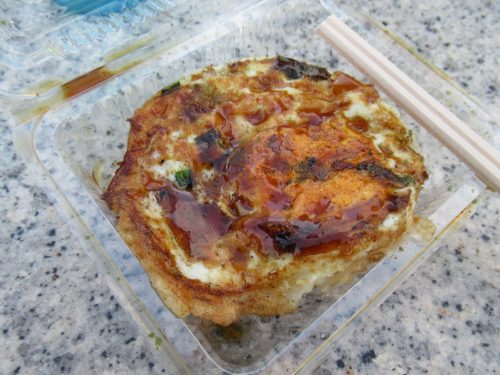
Tasty as the ring-yaki was, it was nowhere near enough food, so next up, I got myself a tsukune (chicken and gristle meatball) skewer and a bottle of ramune to chow down on while watching the dancers do their thing. Lots of festival foods can be eaten while standing or walking, but those who absolutely must sit and can’t find a chair or bench can always make due with a curb. I parked myself by a hotel near the station and dug in.
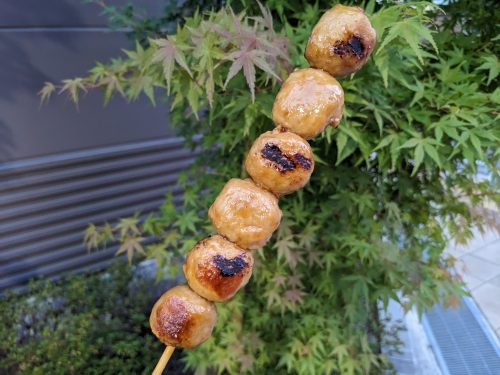
Just to make sure I was getting my daily dose of veggies, I also bought a chilled cucumber and drizzled on some chili and miso sauce. At this point, the sky had gone dark, so I wandered away from the streets in order to find a proper place to sit and eat in solitude. Benches were pretty commonplace in the area, but diners who insist on eating at a table will be pleased to know that a nearby supermarket provides just that outside the entrance.
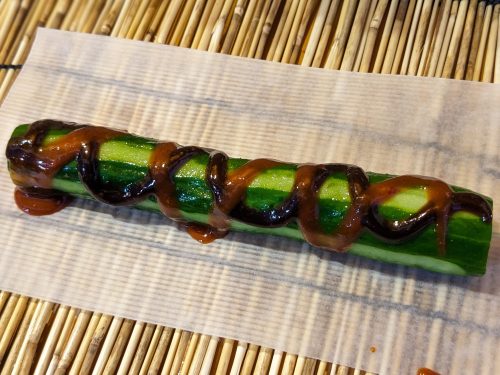
Moment of Joy: Happy Vendors
Concurrent with but not related to the Yassa Festival was a Pudding Fair going on within Mihara Station, where there were even more food stands selling pudding and other snacks. Unlike your average festival food stall worker, who seems pretty jaded about the job, the vendors at every stand in the Pudding Fair were so cheery to the customers. Their attitude raised my spirits and convinced me to buy a couple items to eat back at my ryokan. This fried pork sandwich and three-layer veggie dip ended up being a delicious and nutritious late-night snack.
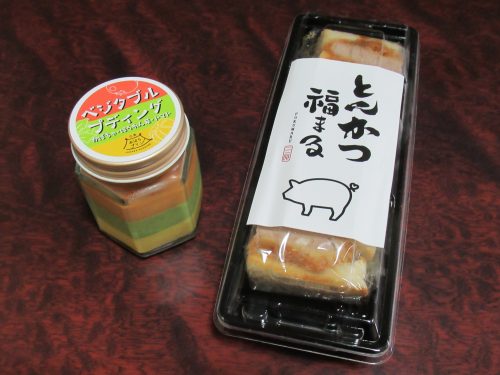
Yassa Fireworks
The next day, after coming back from my first Setouchi day trip, I made haste for the site of the Yassa Festival fireworks. These fireworks were held at a location different from the dance, so it was a fairly long walk to the riverbank, which was pitch black except for the food stalls. I made sure not to eat dinner that night either to ensure I had the stomach for that classic, carnival cuisine.
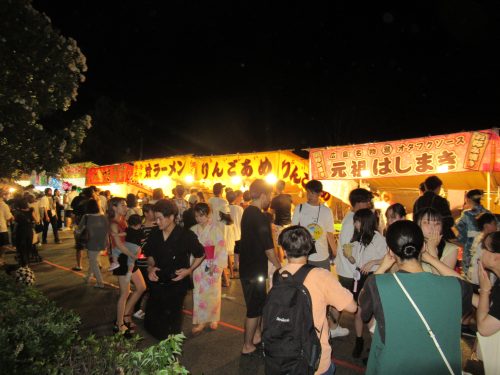
Compared to other fireworks festivals I had been to, the Yassa fireworks were set off sporadically, and unless one climbed a hill to the edge of the Numata River, the locations of the explosions were pretty difficult to predict. Most of the fireworks rose high into the air before exploding, but quite a few of them seemed to explode directly upward from the ground, which shocked us viewers.
For dinner, I bought a box of yakisoba, then found a comfy curb to sit on and watch the fireworks while stuffing my face with hot noodles. That was followed by a chocolate-covered banana with sprinkles that resembled fireworks themselves, and an extra-large cup of karaage chicken after the show ended, for good measure. The taste of some items was mediocre, but the appeal comes from the occasion rather than the presentation or flavor.
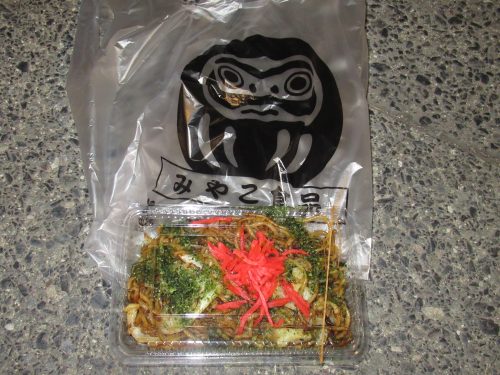
The fireworks show—and by association the Yassa Festival—ended with a literal bang, as the grand finale illuminated the night sky and made small children scream in terror. To be able to see a riveting dance in the streets one day and marvelous fireworks was an experience that justifies spending the night in Mihara, and I would recommend such a plan to anybody. However, those who think that the summer fun in Mihara ends with the Yassa festival are sorely mistaken, as summer means fun by the sea, and with Mihara Port comes an entire series of boat trips to be enjoyed.
To be continued…
Written by the Joy in Hiroshima Team
